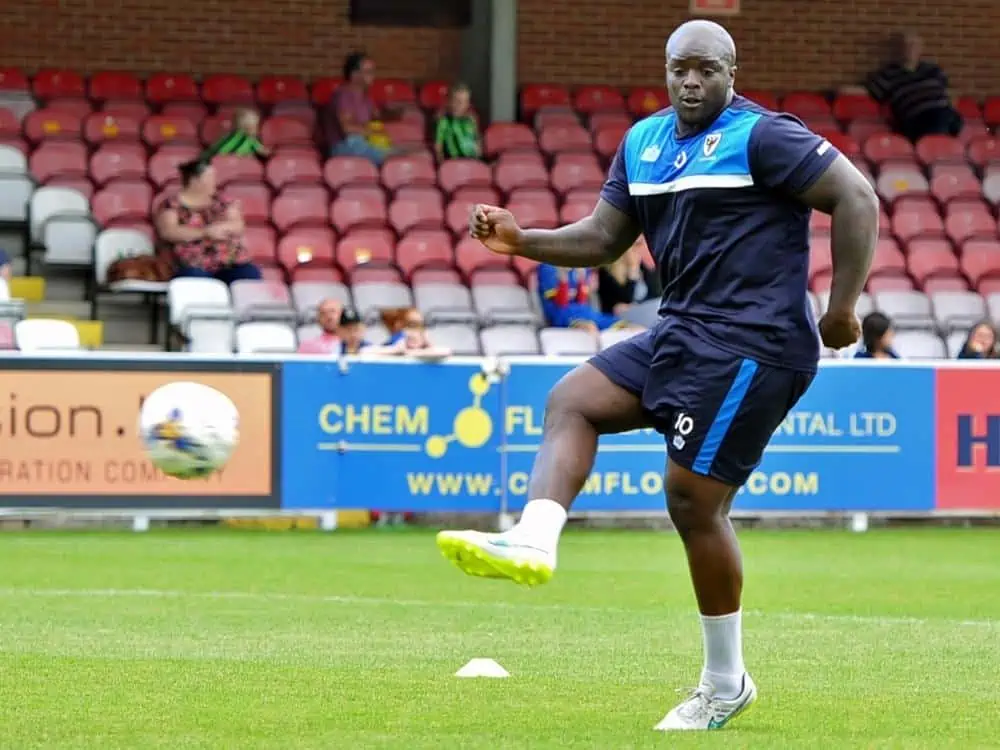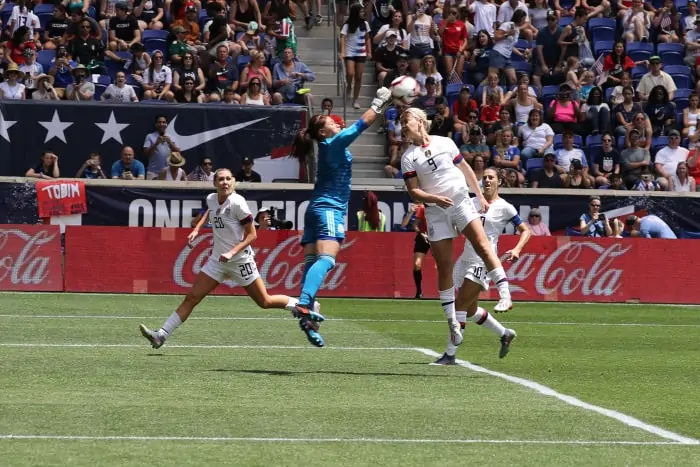Share the post "Slow Soccer Players – Position & Qualities (Helpful Tips)"
Some of the best soccer players I’ve ever played against have not been the fastest. Slow players have their advantages. Speed is important in soccer, but it’s not the only quality that matters.
It’s more than possible to be a highly successful player even if you are slow, and finding the right position is crucial.
Slower players thrive as goalkeepers, central defenders, or central midfielders, depending on their unique skillset.
Coaches must assess the strengths of each player’s strengths, formation, style of play, and more when choosing a position for a player without speed.

Can I be a soccer player if I’m slow?
You can be a great soccer player even if you are not the fastest. Soccer is a sport that requires several feats of athleticism, but it also requires a great tactical vision and technical abilities.
Many popular soccer highlights show flashy players with a lot of paces. Speed is indeed a very helpful quality to have in soccer, but it’s not the only quality that matters.
Sometimes that slow pace makes a player adapt differently, increasing their other skills.
Some other athletic qualities that help soccer players aside from speed include:
- Strength
- Power
- Agility
- Endurance
Mental qualities a soccer player needs include:
- Focus
- Competitiveness
- Resilience
- Determination
- Problem-solving
- Teamwork
- Communication
- Tactical awareness of each position
- Reading the game defensively
Technical abilities that great soccer players need are:
- Short passing
- Long passing
- Flighted long balls
- Shooting (laces, with power)
- Finishing (placing the ball in the goal with finesse and accuracy, may use the inside of the foot)
- Ball control/dribbling
- Defending
- Ball trapping
There is a long list of skills that soccer players benefit from, and speed is only one of those skills. Every soccer player has a unique arsenal of natural gifts and highly-trained skills that they’ve developed.
For some players, speed may be an important part of their game, but slow players with some other key attributes can succeed in soccer.

What position in soccer runs the least?
Goalkeepers run the least in soccer. They have a very important job, as they are the last line of defense to keep the ball out of the goal.
However, their job generally relies on a very different skill set than many field positions, significantly reducing the need to cover the distance.
Aside from goalkeepers, central defenders tend to cover the least distance in a game. A Journal of Human Kinetics study examined different soccer positions during the 2010 World Cup. The study found that;
“In brief, excluding the goalkeeper position for tactical reasons, the central defender position shows the least distance covered.”
Human Kinetics
Keep in mind that the amount of running a player does in a given position depends on:
- The team’s formation
- Their strengths
- The flow of the game (is their team in control of possession or not)
- The other team’s strengths and strategy
best position for slow soccer players
The top three positions for slow players are: goalkeeper, central defender, and central midfielder. Here’s how to determine which position best suits a particularly slow player:
Goalkeeper Skillset
Goalkeepers do not cover much ground, but they have an important and unique job on the field. Here are qualities that a slow player must have to succeed as a goalkeeper:
- Immense focus. The ability to switch “on” at any moment.
- Resilience. Ever player must have this, but goalkeepers have to bounce back from even costly mistakes.
- Hand-eye coordination. Goalkeepers are the only players who can use their hands in the game. They must have great hand-eye coordination.
- Reaction time. Quick reactions to stop rocketed shots and react to the other team’s efforts on goal.
- Power. While goalkeepers don’t have to run much, they do need to be able to jump high to catch flighted balls and dive out to block shots.
Central Defender Skillset
Central defenders also do not cover as much ground as other positions, and some slower players may succeed here.
Consider that having two slow central defenders may not be a smart tactical option, as they may struggle to keep up with the opponent’s forwards.
Here are qualities of a central defender that a slow player should have:
- Tactical knowledge. Slow center backs must have immense tactical knowledge of the game to handle opponents expertly.
- Composure. Some of the best slow central defenders are the most composed players on the ball. They start the attack and can keep cool under pressure.
- Defending. Slow players can excel at defending if they master positioning, timing, and using their bodies.
- Ariel presence. Central defenders without pace don’t want to enter a foot race with forwards. They should be skilled in the air, and able to block and clear incoming long balls.
- Communication. Communication is essential for all positions, but aside from the GK, center backs have the best vision on the field. They must be able to direct others and organize their team on the fly.
Central Midfielders Skillset
Center mids cover a ton of ground per game, so why is this a good position for slow players? Even though center mids run a lot, they do not necessarily run fast very often.
This is especially true for defensive mids. Midfielders tend to be well-rounded players, not always the fastest players.
Slow players can be very impactful central midfielders if they have:
- Endurance. Center mids cover the most ground on average. Even though they may not run the fastest or need the most speed, they are workhorses who require extensive endurance.
- Ball handling skills. Central midfielders must navigate tight space, thread balls to forwards, and often receive the ball amidst chaos. They should have excellent ball-handling skills, especially when looking to beat faster players.
- Awareness. As a center mid, you have action around you 360 degrees. Central midfielders must be highly alert and aware of their surroundings.
- Ariel presence. Much like central defenders, defensive mids should have a strong ariel presence.
- Well-rounded skillset. Center mids cannot have any glaring weaknesses. They are involved in the attack and defense and transition in both directions. They should be technically, tactically, and physically sound players.
Slow attacking midfielders
The attacking midfielder is an offensive playmaker. They drive at the opponent’s defense, distribute to forwards, and push into the box for finishing.
Many soccer players dream of playing this position, and attacking midfielders often have some recognizable pace.
However, there are slow attacking midfielders who are very successful. Pace can help in this position, but craftiness and a great vision will take you further.
Sam Mewis and Lindsey Horan from the United States Women’s National Team are two great examples of slower attacking midfielders that are very talented and successful.
Both were members of the USWNT during the 2019 World Cup, where they earned gold medals. Sam Mewis was voted the 2020 U.S. Soccer Female Player of the Year.
Soccer players without pace can still be extremely talented and successful. Depending on the player’s unique skillset, some of the most common positions to play a slower player include goalkeeper, central defender, and central midfielder.
Share the post "Slow Soccer Players – Position & Qualities (Helpful Tips)"
Joel is a seasoned soccer journalist and analyst with many years of experience in the field. Joel specializes in game analysis, player profiles, transfer news, and has a keen eye for the tactical nuances of the game. He played at various levels in the game and coached teams - he is happy to share his insight with you.



